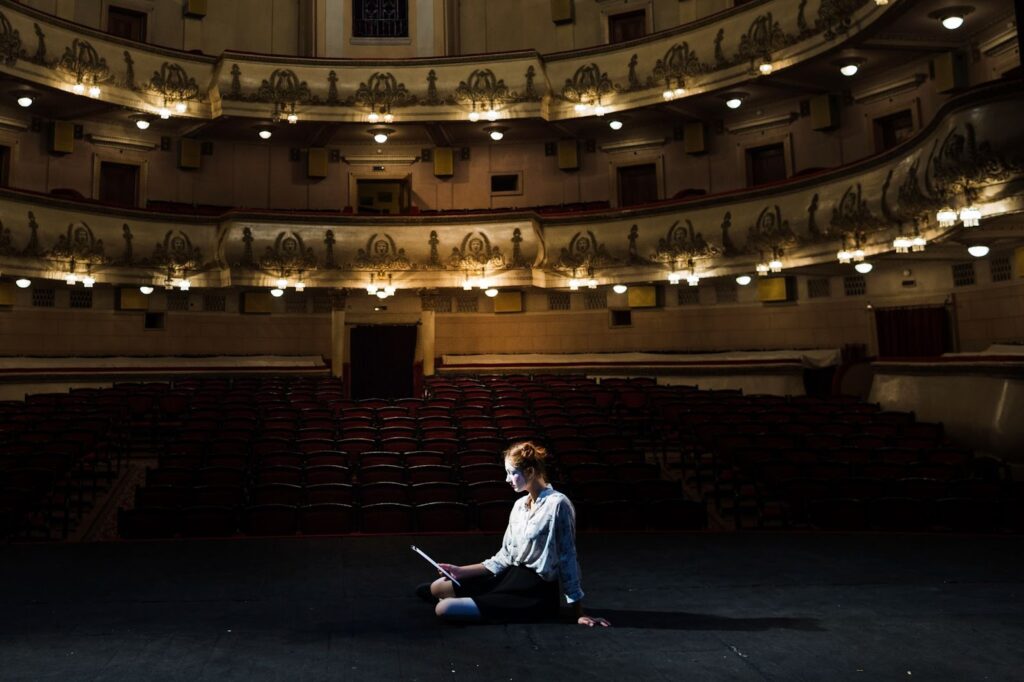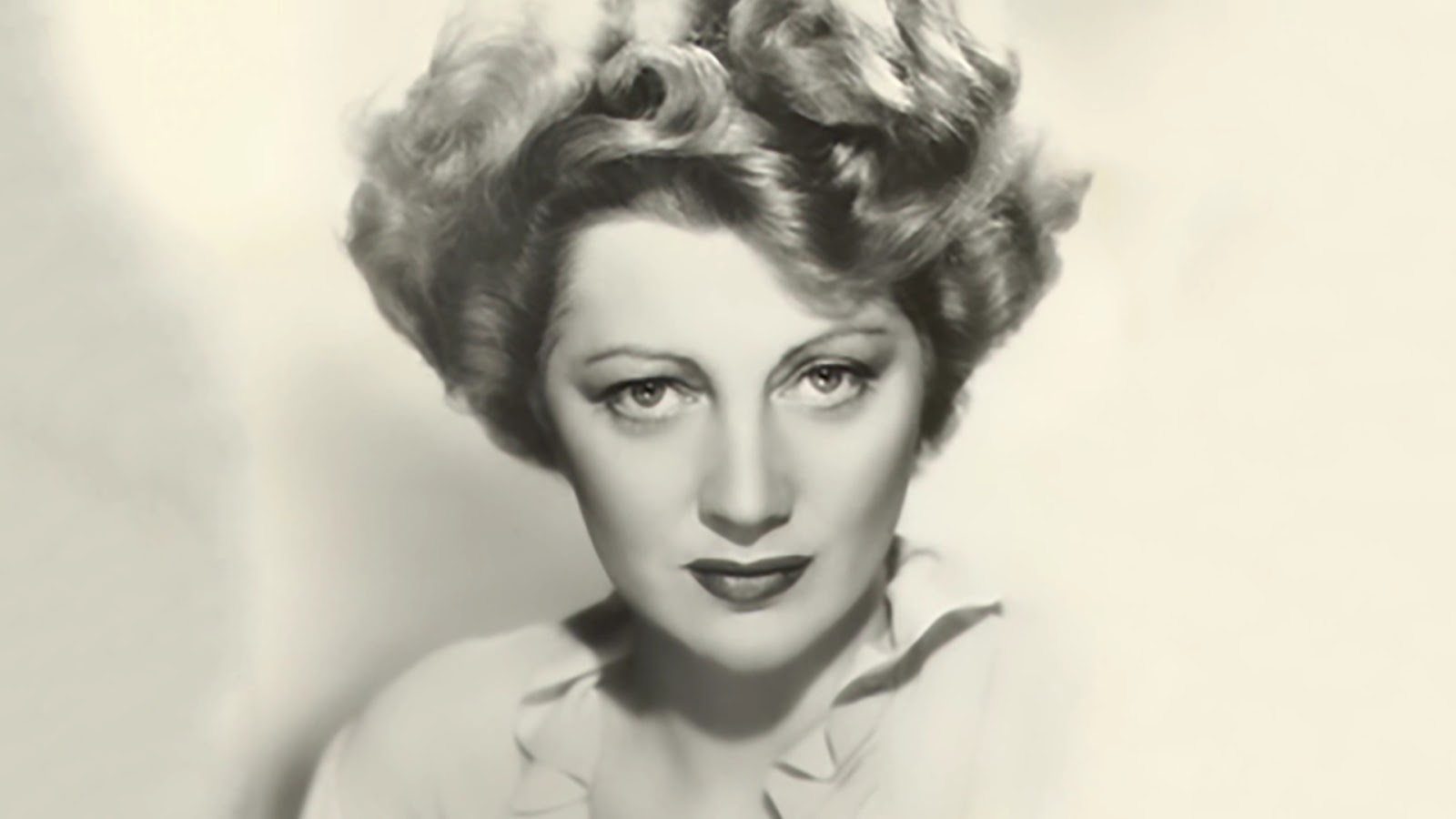Stella Adler stands out as a prominent figure among America’s distinguished theater educators. Her captivating charisma and unwavering principles attracted aspiring talents from various corners of the country, including renowned personalities like Marlon Brando, Elaine Stritch, and Robert De Niro.
Even in the present day, her influence endures through the theater practitioners who embrace the methodology she pioneered, which integrates the philosophies originating from Konstantin Stanislavski and the avant-garde Group Theatre of New York City, established during the 1930s.
The Early Life and Theatre Beginnings of Stella Adler: A Spark Ignited
Stella Adler, a luminary in the realm of acting, was born in 1901 into an influential family of Yiddish actors in bustling New York City. Even as a young child of 4, she showed a remarkable talent for acting, often performing alongside her parents on stage. This early exposure to the theatrical arts set the foundation for an illustrious acting career that spanned from the vaudeville stages to London’s esteemed theaters, and ultimately, the hallowed halls of Broadway.
Discovery of the Stanislavski System: Shaping a New Acting Paradigm
In the mid-1920s, specifically 1925, Adler was fortunate to receive training at the renowned American Laboratory Theatre under the mentorship of two former members of Stanislavski’s famed Moscow Art Theatre. This was where she was exposed to Stanislavski’s groundbreaking system of acting. His unique method emphasized the importance of an actor delving deep into a character’s inner world instead of merely focusing on external expressions. Stanislavski was a revolutionary force in theatre, bringing about a seismic shift in Russian theatre as well as globally. In the United States, his method inspired a paradigm shift from the previously melodramatic acting style to a more realistic, authentic approach. Adler, alongside other acclaimed theatre professionals of her time, was deeply influenced by Stanislavski’s system.
The Advent of the Group Theatre: A Collective Pursuit for Realism and Social Consciousness
1931 marked a significant year for Adler when Harold Clurman, Cheryl Crawford, and Lee Strasberg established the Group Theatre in New York and extended an invitation to Adler to be part of this pioneering entity. The vision of the Group Theatre was to assemble a dedicated ensemble of actors committed to crafting realistic performances that resonate with social consciousness. Despite the shared quest for inventive ways to create engaging, socially relevant theatre, ideological differences amongst the group’s members often arose, reflecting the creative tension within this innovative collective.
A Dispute Over Emotion: Interpreting Stanislavski’s Techniques Differently
Differences in interpreting Stanislavski’s techniques led to a divergence between Lee Strasberg and Stella Adler. Strasberg heavily relied on emotional recall, a method where actors draw emotions from their own personal experiences to mirror the experiences of their characters on stage. This emphasis on personal memory as a critical tool to evoke emotion was not entirely favored by Adler. She believed that such an approach could limit an actor’s ability to genuinely embody a wide range of characters, as their driving force would be bound to their own subjective experiences.
Emotional Recall vs Imagination: Seeking Stanislavski’s Input
Motivated to gain a deeper understanding of Stanislavski’s perspective, Adler embarked on a journey to Paris to meet the maestro himself. During her interaction, she sought his advice on whether using personal memories were indeed an essential prerequisite to create authentic performances.
Revisiting Stanislavski’s Teachings: An Evolved Understanding
Spending five weeks under the tutelage of Stanislavski allowed Adler to witness firsthand an evolution in his teachings. Contrary to his initial emphasis on emotional recall, Stanislavski now promoted the use of the actor’s imagination as a key tool for character interpretation. He encouraged actors to adapt their actions to align with their characters’ given circumstances, shifting the focus from the actor’s own emotions to those inherent in the character.
The Stella Adler Technique: Infusing Imagination into Performances
This newfound understanding had a profound impact on Adler’s approach to acting and teaching. It became the cornerstone of what is known today as the Stella Adler Technique. Adler held numerous teaching positions throughout her career, including at acclaimed institutions such as the Yale School of Drama, New York University, and The New School. However, her most significant contribution remains her own acting conservatory, the Stella Adler Studio of Acting, where her technique continues to be taught and valued by aspiring actors.
Distinguishing Factors of Adler’s Technique: A Unique Interpretation of Stanislavski’s Method
Despite the influence of Stanislavski’s teachings on various prominent American acting trainers, including Adler, each developed unique interpretations befitting their individual understanding and experiences. At the core of Adler’s method lie several critical elements that set it apart.

Delving into the Script: The Responsibility of Understanding
One fundamental aspect of Adler’s technique is a heightened emphasis on script analysis, combined with an unflinching respect for the playwright. Adler placed an increased onus on actors to comprehend the play independently, rather than leaning on the director for interpretation. In order to fully craft the character, it’s essential for actors to thoroughly scrutinize the script, identify the character’s personality traits and life situations. Actors must then align their performance with the circumstances of the character, as opposed to adjusting the character to suit their personal experiences.
Beyond the Script: The Need for Comprehensive Research
Nevertheless, the written script is not the singular source to inform an actor’s performance. Tom Oppenheim, artistic director of the Stella Adler Studio of Acting and Adler’s grandson, underlines the necessity for actors to conduct extensive dramaturgical research to enrich their imagination with specific details.
“In-depth reading unlocks an imaginative journey,” he points out. “If a play is set in a specific location and historical period, like St. Louis in 1930, delve into research to truly understand the milieu and era, adding substance to the skeleton provided by the text. Knowledge of history and contextual circumstances enriches the portrayal.”
Master teacher at the Art of Acting Studio in Los Angeles, Ron Burrus, advises his trainees to adopt a cause-effect perspective while dissecting a script. In his view, the dialogues delivered by a character are the effects, and it is incumbent upon the actors to discern the causes.
“Words give voice to experiences,” Burrus explains. “When we study the playwright’s words, we seek to comprehend, ‘What is the journey that my character is on that instigates such experiences?’”
Fostering Imagination: The Fuel for Acting Brilliance
In each class at the Art of Acting Studio, Burrus begins by posing a simple question to his pupils: “What one new thing did you discover today?” While some learners may initially grapple with the idea of daily novelty, Burrus emphasizes the importance of perpetual observation and curiosity as crucial elements of an actor’s imagination development.
Likening the imaginative process to an engine, Burrus suggests that astute observation of the surrounding world essentially functions as fuel. With a reservoir of observed details, actors possess a treasure trove of inspiration for character portrayal the next time they are on stage.
Adler’s technique does use personal experiences as a source but it departs from Stanislavski’s method of emotional recall. Rather than relying on personal memories to reincarnate emotions during performances, actors under Adler’s guidance use real-life observations as the stimulus that generates a wholesome, three-dimensional rendition of their characters.
“Every actor’s past is unique,” Burrus notes. “How you choose to harness and channel it paves the way for your acting journey. One could opt for a direct approach, superimposing personal experiences onto the playwright’s words or choose to populate the inner mental landscape with places and events, sparking the imagination and bringing a vibrant dynamism to the performance.”
The Stella Adler Technique allows actors to breathe life into their roles, stirring believable emotions in the audience while ensuring that the actor’s individuality and the character’s authenticity remain distinct and unblurred. Through this method, actors are empowered to create compelling performances that truly honor the playwright’s imagination while leaving their own indelible imprint on the character.
Magnifying the Essence of Characters: Delve Deeper than the Surface
“It is a deadly sin to be boring,” was a well-known maxim by Stella Adler. However, the depth of this guiding principle transcends the superficial understanding of making a character intriguing or settling for distinct character quirks.
“The theatre world is a gateway to the sublime,” explained Tom Oppenheim. “Adler’s injunction against being ‘boring’ was essentially a call to arms to reveal humanity’s profound truths and profound ideas.”
This philosophy means ‘Don’t be boring’ was not only about pleasing spectators with entertaining performances. It underscored the importance of contemplating the complexities of human nature and conveying significant insights. According to Oppenheim, actors achieve this by allowing their characters to mirror something that transcends the ordinary.
“The belief was that you should aspire towards literature,” he elucidated. “Dramas are akin to poems – the characters are poetic inventions, and we must strive to do justice to them, as a clergy person would to a saint. People cherished Marlon [Brando] because he raised the stature of the characters he portrayed. On close examination, one discerns an elevated individual, a touch of the celestial.”
Thus, the Stella Adler Technique underlines the importance of extensive research and deep understanding of the character’s circumstances. It challenges actors to elevate the character portrayal, aiming to reveal a more profound, divine aspect of human nature. It is about reaching up to the grandeur of literature and the sanctity of drama, to present a nuanced, vibrant, and divine depiction of the human condition.
Conclusion
In conclusion, Stella Adler’s enduring legacy as a prominent theater educator continues to shape and inspire countless artists across generations. Her innovative techniques and commitment to excellence have left an indelible mark on the world of theater, ensuring that her influence will be felt for years to come.
